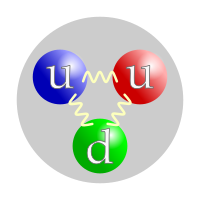
Photo from wikipedia
Rationale Chemical mass shifts in quadrupolar ion traps have been studied previously but only for a limited number of analytes and mass ranges. Here, mass shifts of cluster ions, commonly… Click to show full abstract
Rationale Chemical mass shifts in quadrupolar ion traps have been studied previously but only for a limited number of analytes and mass ranges. Here, mass shifts of cluster ions, commonly used as calibrants, and other analytes are qualitatively evaluated on the Bruker amaZon spherical ion trap (QIT) and the Finnigan LXQ linear ion trap (LIT). To extend the mass range from previous experiments m/z up to 4000 are investigated. Methods Chemical mass shifts of CsI, Y(HCOO)3, and NaCF3COO cluster ions, CF3COO−, Na+, and Cs+ adduct ions, protonated commercial calibration solutions and peptides, and deprotonated peptides were investigated on the Bruker amaZon speed QIT and some of these were also investigated on the Finnigan LXQ LIT. Results On both instruments, peak distortions and mass shifts toward lower m/z became apparent as m/z approached 1000. To some extent, the issues were more severe at slower scans. Peak distortions included loss of resolution, tailing, or fronting and were different between the amaZon QIT and the LXQ LIT. The noncluster and nonadduct ions analyzed showed no obvious mass shifts or peak distortions under the same analysis conditions. Conclusions As expected, the ion traps investigated here showed mass shift and peak distortion issues, and such issues persisted at m/z up to 4000 on both instruments. Peak distortions were different between the amaZon QIT and the LXQ LIT, and were not always visible despite mass shifts. Both mass shifts and peak distortions make cluster ions and some adduct ions unsuitable for ion trap calibration.
Journal Title: Rapid Communications in Mass Spectrometry
Year Published: 2022
Link to full text (if available)
Share on Social Media: Sign Up to like & get
recommendations!